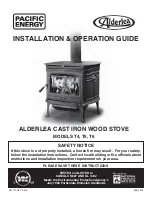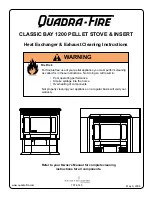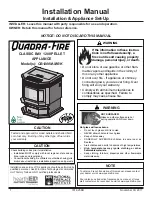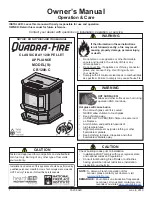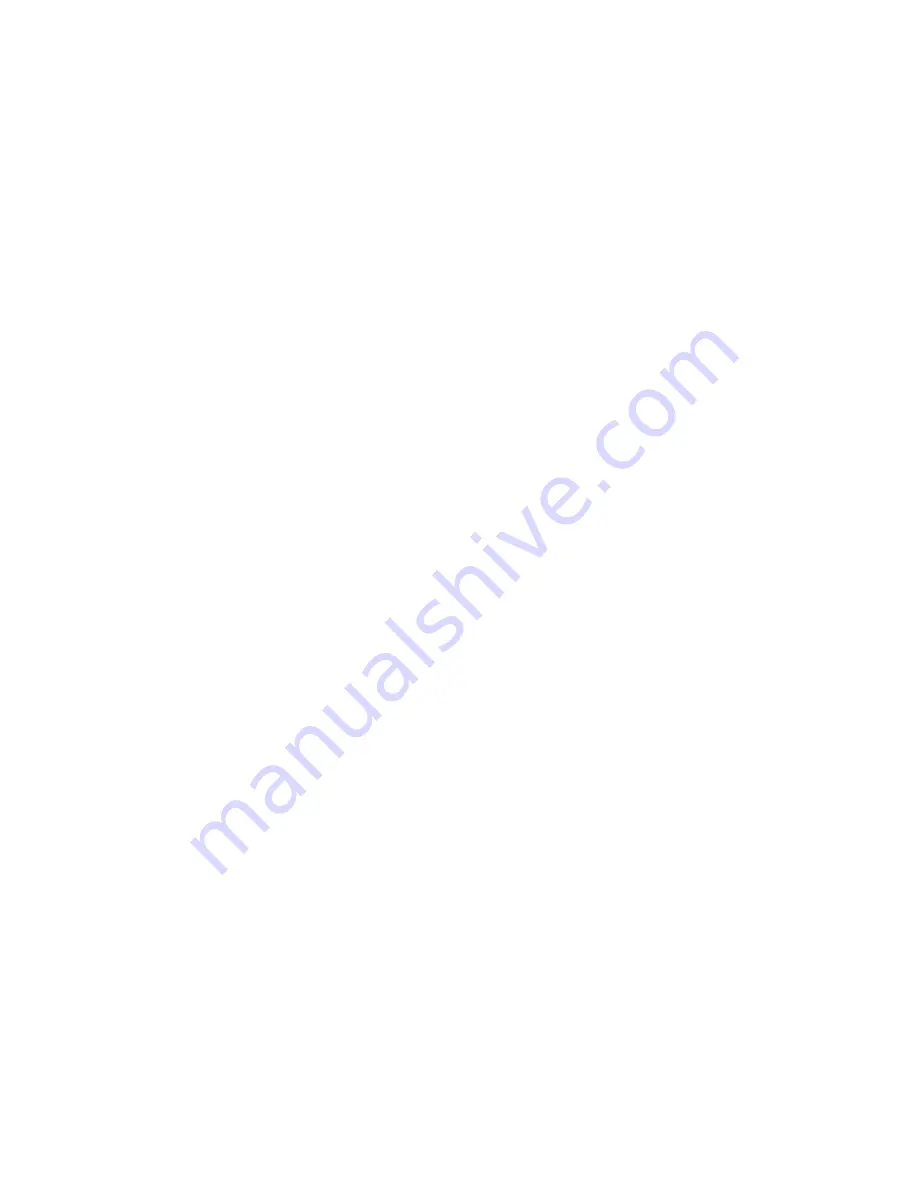
12
Types of fuel
Wood needs to be well seasoned before it is burnt. Different woods
take varying amounts of time to season but, as a general guide, be-
fore being used in a stove, wood should be cut to length, split and
then stacked under cover (with the sides open to the air) for at least a
year. Wood is ready for burning when radial cracks appear in the end
of the logs and the water content is no higher than 20%. It is then
good practice to have it in the log basket, inside the house, for a few
days before it is actually used in the stove. The internal width of the
firebox is 350mm and so firewood should be no longer than this.
Do not burn unseasoned wood in your wood burner. Do not burn par-
ticle board, lacquered, painted or treated wood, plastics, rubber or
liquid fuels. The stove is not suitable for burning solid fuel i.e. bri-
quettes\ coal\coke\smokeless fuel. The stove should not be used as an
incinerator.
Remember
water doesn't burn so use dry fuel. Wet wood causes
black glass and tar build up inside chimneys and will damage your
appliance.
Ashes
The ashes should only be removed when the fire is out and has been
left to cool completely. The wood bar can be removed to make access
easier
(figure 3)
. Wood burns well in it’s own ash and so a thin layer
of ash can be left in the bottom of the stove, this also helps to protect
the base fire bricks.
Note: The above notes on operating your stove should be taken as
guidelines only. Each stove installation is unique and the operation of
each stove is subject to many variables including; the fuel used, the
size of the room, chimney performance, ventilation. As such, the best
operation of your stove will be learned through experience only.
Summary of Contents for 4
Page 1: ...1 Vesta 4 4KW Woodburning Stove Installation and Operating Instructions ...
Page 2: ...2 ...
Page 3: ...3 Annual servicing ...
Page 5: ...5 Vesta 4 Wood Burning Stove Operating Instructions ...
Page 15: ...15 Vesta 4 Wood Burning Stove Installation Instructions ...
Page 20: ...20 Illustrations CLOSED OPEN Fig 1 Fig 2 Shown in fully open position ...
Page 23: ...23 Illustrations Dimensions ...
Page 25: ...25 ...
Page 26: ...26 ...




























